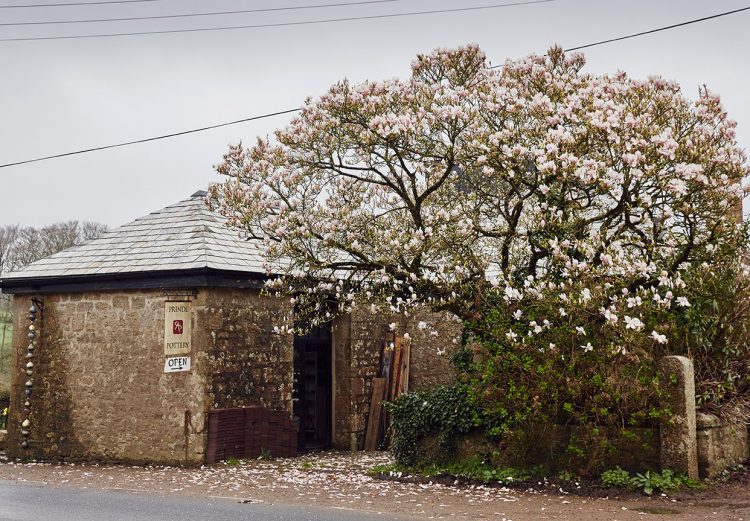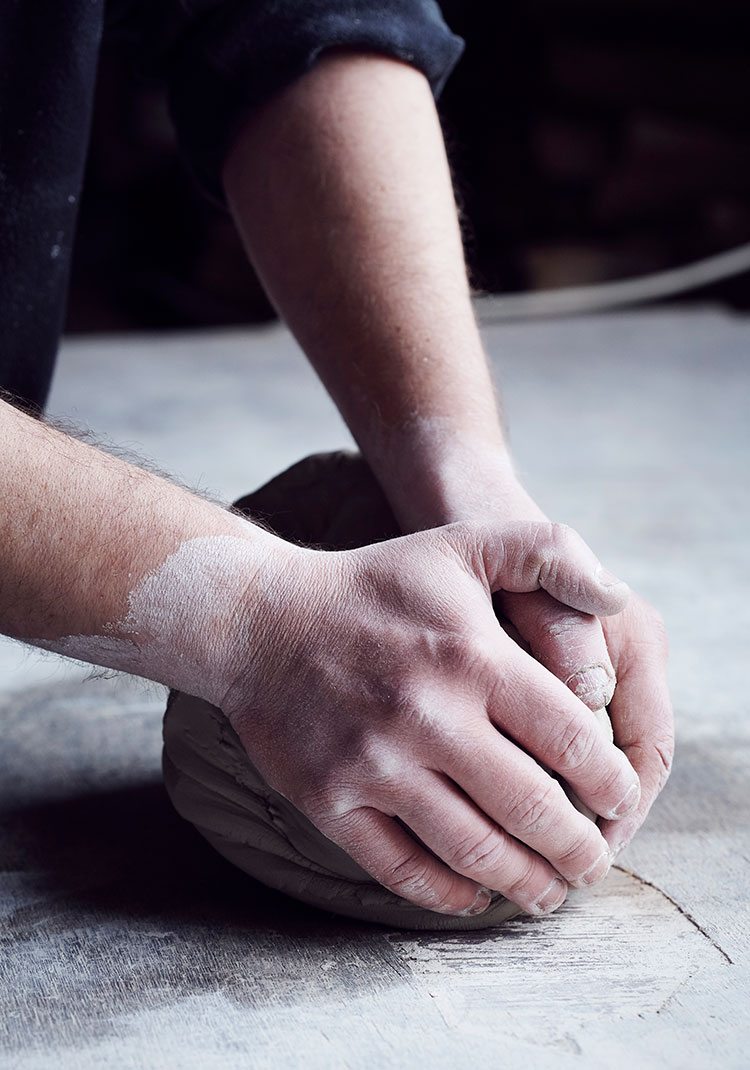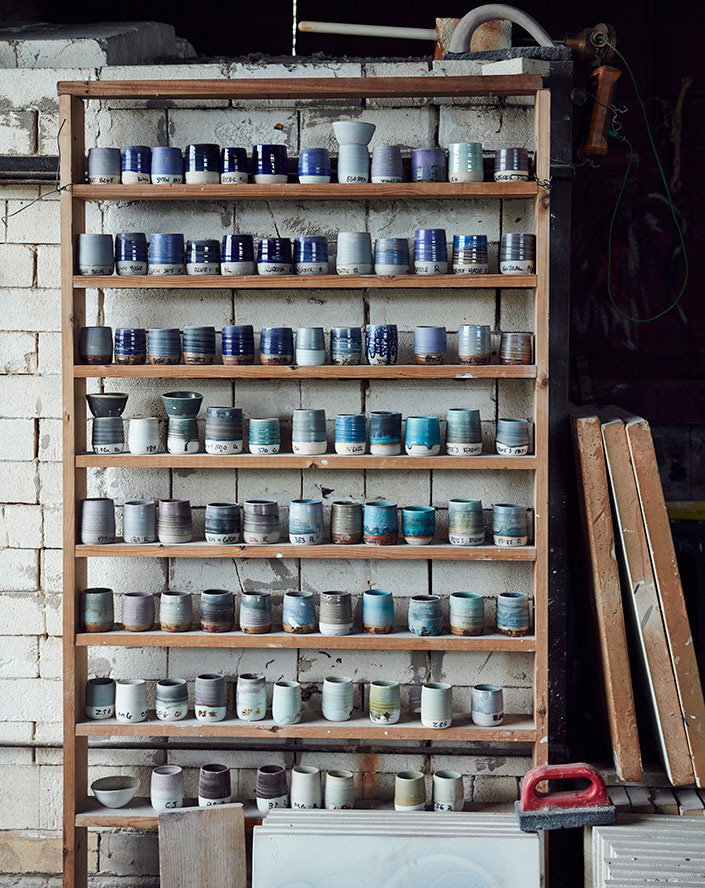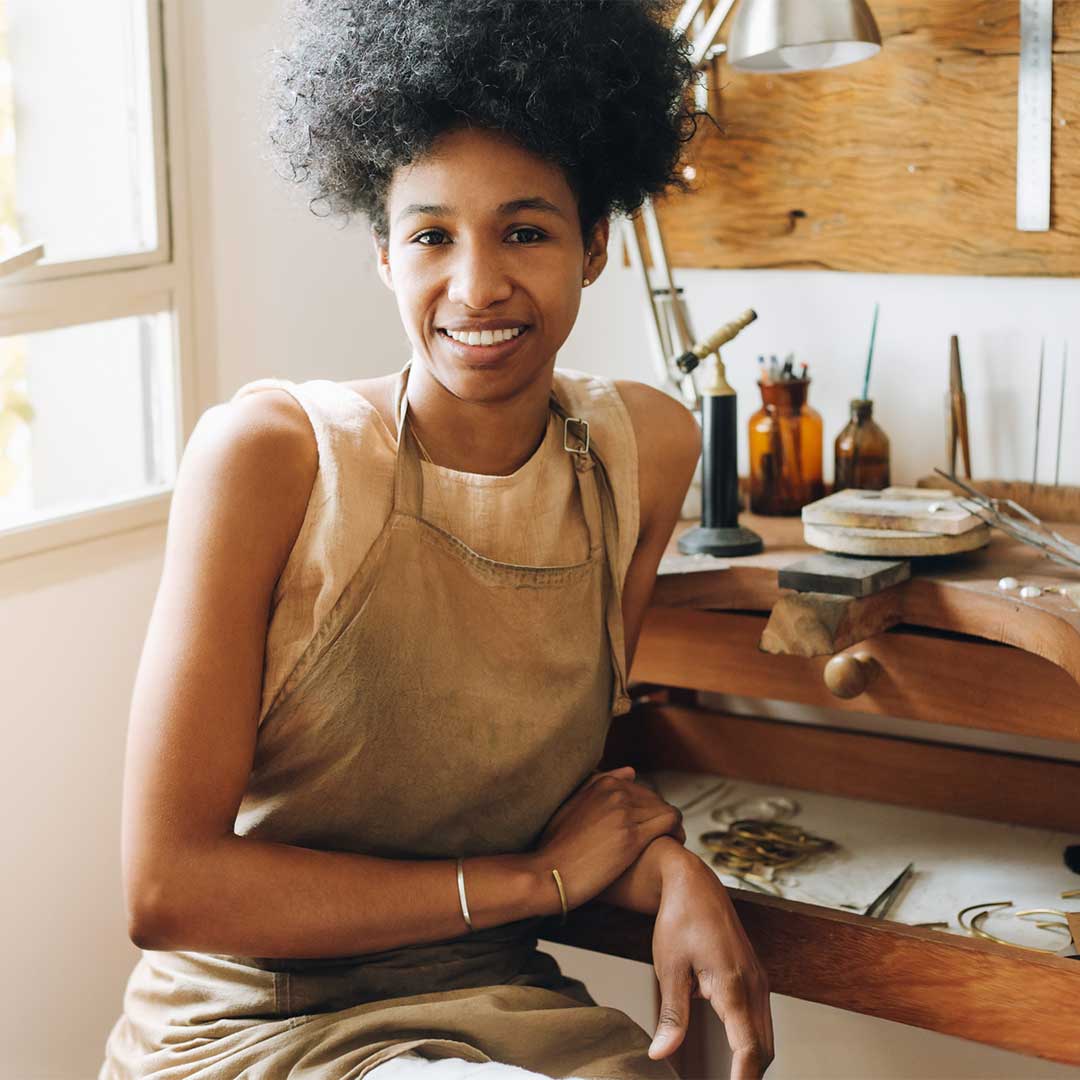
I live in a very nice (or it will be, once we have rescued it a bit more) terraced Victorian house in Truro (Cornwall’s city) with my wife, Susie, and our two daughters, Martha (18) and Elspeth (12), along with Otto (3) my big scruffy labradoodle. Our two older children, Meghan (23) and Joseph (21) both live and study in London. My workshop is a half an hour’s drive away and is in a fantastic old granite forge, named Trebyan Forge, which was built in the early 1900’s. The main space is very large and light, with a showroom at the front that was previously utilized as a shoeing room for horses. I get quite a lot of ‘life envy’ from people until they realise how cold it gets during winter!

I was born in Frankfurt, Germany, where my father worked for Morgan Guarantee. When I was two, his work moved to London and my parents, older sister and I ended up in a Tudor house in Sussex. The village we lived in, Ditchling, has an impressive artistic and craft history. Makers such as Eric Gill have lived there, though it was a while until I came to appreciate that. When I was eight, we moved to a very nice part of Tokyo for four years where I attended a mixed Japanese/western school and had a wonderful time learning Japanese. We later returned to England, and I ended up at Winchester College where I forgot all about my experience in Japan.

When I later enrolled and went to Princeton I then realised the great impact my years in Japan had actually had on me. Up until attending Princeton at nineteen, I had done very little art. Instead, my focus was very much on music, including playing the violin and viola, and a great deal of singing; music is still a big part of my life and a huge inspiration. In my sophomore year at Princeton, on a bit of whim, I chose to take a Japanese language course and a ceramics class. The Japanese came tumbling out of my head, freed after seven years in my brain’s wilderness. I also fell in love with clay very quickly. It did help that my first teacher was none other than Toshiko Takaezu. I had three rewarding years studying with Toshiko, and she is still the most influential ceramic voice in my head.

PEACEFUL CREATING
My Shimpo “whisper” wheel is so beautifully quiet that I can listen to music all day long without the sound of a motor whirring away.
I knew within a couple months of taking these classes that I wanted to return to Japan and find an apprenticeship with a potter after graduating. I was lucky to find an apprenticeship quite quickly with Takao Okazaki in Yamagata. He had studied for many years with Kato Tokuro (1897-1985), arguably the most important Japanese potter of his generation, and was well versed in many traditional Japanese styles, which he taught me. He also introduced me to Anagama wood firing, which I found completely exhilarating. I spent two years with Okazaki, living with his family, making pots and chopping vast amounts of wood. The Japanese influence and reflections in my work are therefore dissimilar to others seen in England, which are typically linked to the Leach/Hamada/folk craft traditions.

The lion’s share of my energy as a professional potter today is spent on making things in clay and porcelain. Although I don’t overtly try to make many specifically Japanese pots in terms of shapes and glazes, I can’t help the way my mind works and my approach to working in clay and the feeling of most of my pieces is quite Japanese. I enjoy working on a wide range of sizes, from very fine translucent porcelain to big monumental showpieces. I also enjoy stepping back and letting go of (some!) control and giving the kiln quite a big say in how the work comes out, especially with the oxblood and wood/salt pieces. Then again, when I have a large dinner service to make, it is a relief when the glazes behave.
“My shapes tend to be quite simple and allow the huge range of glazes I’ve developed do their high-temperature alchemy and sing.”
Getting my largest pieces through the gas kiln without any explosions or cracking is the biggest challenge in working with pottery. They have to be dried in the gas kiln before biscuit firing to drive off any remaining water, but the gas kiln is very hard to keep at a safe low temperature. I, therefore, receive enormous energy from my work when it is going well, especially from good firings, and try not to get too upset when it isn’t.

“What have you done with Dr. Millmoss?”
– James Thurber
I have been able to follow my passion, doing what I love while raising a large family and this has been my biggest accomplishment in life. I haven’t had a studio at home for nineteen years, which still feels odd, but in some ways, it is healthier this way, at least for my family. Otherwise, I would always be in it or would feel the mental pull to be there, if it was just up the garden path. Makers should follow what is in their hearts and minds as I have been fortunate enough to do.
















